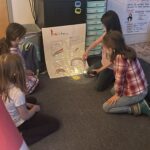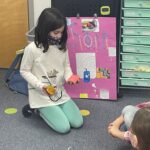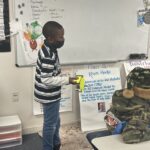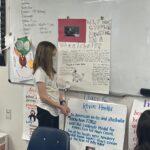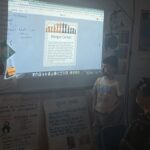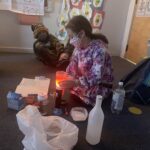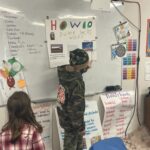The “Genius Hour” Project
When you think back to what you liked most about your school experience as a child, it’s probably not that time you completed a parts of speech worksheet. We remember the things that got us excited, the times we got to complete an interesting project or went on a field trip to the zoo. Although not every day can be a field trip, including choice and appropriate tools and materials can help motivate and engage the minds of our students.
Interest-based learning focuses on the standards that students are expected to learn while also adhering to their strengths, abilities, and interests. In order to accomplish this, assessments, projects, and assignments are tailored to the individual.
The “Genius Hour” project is based on student inquiry and student-directed learning. It gives students an opportunity to look at the big wide world around them and explore their own unique interests in a loosely structured, but supported way.
It is…
- Student-centered
- Messy
- Emphasizes inquiry and research
- Authentic
- New challenges (i.e., it creates new problems to solve in your classroom)
- Inherently personalized
- Inherently creative
- Purpose-driven
- Maker-friendly
- Often collaborative and social
Not only does Genius Hour create a pathway for intrinsic motivation, but it also encourages creativity. Generating questions and diving deeply into topics they are passionate about sets students up to be curious lifelong learners. In addition, the workshop-style of Genius Hour builds students’ social skills and confidence. It encourages collaboration as students draw on their personal strengths and swap expertise, acting as “consultants” for one another.
The Process
1. Pick a topic.
Brainstorming ideas and narrowing down options can sometimes be the trickiest part of the process for students. Guide them to choose a topic that they are truly passionate about and is just the right size.
2. Develop a driving question.
Once your students pick a topic, they will need a driving question to guide their research. This is the what, why, and how that allows them to go deeper into their subject. If the question they are asking can be answered with a simple Google search, it is not specific enough.
3. Do the research.
There are many ways for students to research their chosen topic. In addition to reading books and articles, students can access websites, watch videos, and connect with experts in the community. Have your students use note catchers, write in their journals, or blog to stay organized and be accountable for their research. However, don’t get bogged down on this step. Teacher AJ Juliani cautions, “You don’t want to spend too much time in the research phase, because you really want to get into the making, creating, [and] designing phase and start building your project into a reality.”
4. Bring it all together.
Creating something original is the core purpose of Genius Hour. Whether students publish, design, act, make or do, there should always be a tangible takeaway from the process.
5. Reflect.
After the presentation, bring the process full circle and “cement the learning” by asking your students to reflect. What went well? What did you learn? What would you do differently? Where do you want to go from here?

